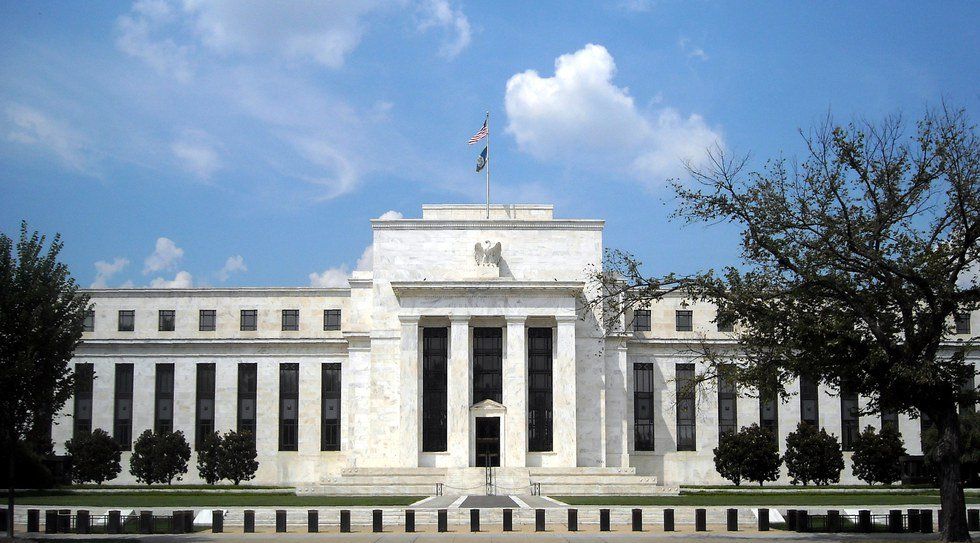After raising interest rates from 0.5 to 0.75 in December of last year, the Federal Reserve opted to hold those rates at their current place on February 1st. This shows fear from the monetary system. They are afraid of the economic impact of raising the rates again. They have been at historical lows for the last 7 years following the financial crisis of 2008. After a sluggish and unimpressive recovery, they do not want to send the country back into financial ruin. The Federal Reserve is now over 103 years old, and they have backed themselves into a corner.
First, one needs to understand the system. The rate that people mean when mentioning the Federal Reserve interest rates is the federal funds target rate. This is related to the federal funds effective rate. Banks lend money to each other overnight to keep up with reserve requirements. Reserve requirements are the amount of money they need to keep in reserve, and it typically around 10%. When a bank is below this reserve requirement, they may borrow money from another bank with a surplus reserve to meet that requirement. They negotiate an interest rate for this loan. This is a common occurrence, and the average interest rate for these transactions is the federal funds effective rate. The federal funds target rate, which is set by the Federal Reserve, is the rate at which the Federal Reserve wants that average to come to. A bank lending to another will set the interest rate high if they feel the loan is risky, since they want to earn their money back in an expeditious manner. They will set it low if they feel the loan has little risk as a result of it being a relatively smaller loan or a trusted debtor. It works in the same way as a loan to a private citizen. The Federal Reserve wants that average to hit their target, but they cannot mandate it. So, they use open market operations to make their goal. An open market operation is when the Federal Reserve distributes currency to the banks. If the target is low, they will inject a large amount of currency into the banking system to make the loans less risky, which will yield lower interest rates. If the target is high, they will freeze the supply of money to make the loans more risky, which will yield higher interest rates.
The Federal Reserve was established in 1913 to control the economy, and curb bank failures. In a booming economy, a bank will make many loans out to private citizens since the risk of return is diminished. In a failing economy, a bank will make less loans to protect itself during withdrawals and bank runs. The Federal Reserve is theoretically there to keep the bank from making foolish and absurdly risky loans by freezing the money supply in a booming economy, and to incentivize banks to loan more by providing them with liquidity in a failing economy. However, problems inevitably arise.
To understand this problem, let’s look at the crash in 2008. One of the most common loans that are issued from banks to private citizens are loans for real estate. Prior to this crash, the federal funds target rate was at its lowest point in decades. This gave the banks carte blanche to make a ridiculous amount of loans, in the expectation that the Federal Reserve would not raise the target rate. A large amount of these loans had adjustable rates. Adjustable rates are interest rates on a loan that can effectively be changed at the lender’s discretion. These were low considering the low target rate. Then the Federal Reserve began to raise the target rate in late 2004, and it reaches above 5 in 2006. The banks were suddenly cut off from a large amount of liquidity. They had to raise money to meet the reserve requirements. They did the only thing they could do. They raised the adjustable rates. Citizens that took out loans were now staring at incredibly large interest rates. Many of them could not make the payments, so they defaulted on their loans. With no way to earn back the money they loaned out, many banks shut down. Subsequently, many citizens who had deposited their money with these banks found that they couldn’t get to their money. Wealth is lost in large amounts, and the economy enters recession. Responding to the problem, the Federal Reserve lowers the target rate to nearly 0, and they haven’t gone above 1 ever since.
The problem with the Federal Reserve is that it creates an economy built on bubbles. It incentivizes banks to pump liquidity into the economy, but that leads to loans the banks would not make under normal circumstances. It forces the banking system into bad investments that are inevitably doomed when the target rate goes up again. It fails to understand the difference between wealth and currency. Wealth is an abstract concept that grows through the creation of goods and services. Currency is simply cash that is only relatively valuable. Flooding the market with currency may jump the economy temporarily, but it will burst once the loans have to be paid. Creating an economy built on lending as opposed to wealth creation is dangerous. The Federal Reserve was created to cut down on bank failures, but, 17 years after it was established, the country had the largest string of bank failures in its history. The Federal Reserve attempts to macroeconomically control microeconomic transactions.
This leads us to the current time. The Federal Reserve is faced with a dilemma. They cannot raise interest rates and risk another recession. They cannot keep interest rates low and allow for runaway inflation or continued bad loans, which will only serve to slow economic growth over time. They cannot lower interest rates below zero and significantly increase the problem. They’re stuck.
This could be avoidable. The problem is the very idea of an organization controlling the lending nature of banks. The Federal Reserve attempts to control the economy, when it should be reactionary in nature. The core function of the Federal Reserve is to print money. Money has a delicate relationship with wealth creation. If the money supply was tied with the creation of wealth (allowing for reasonable amount of inflation), then it would soften the inflation concerns. Secondly, there is already a natural check on reckless banking practices. It’s called a bank run. It is, admittedly, never pretty when a bank is forced into a large amount of withdrawals, but it teaches an important lesson. It tells the banks to be reasonable with the customer’s money. Banks today are not beholden to those who invest money in their organization, they are beholden to the Federal Reserve. If the banks did not have a puppet master influencing their decisions, then they would be incentivized to respond to the needs of their customers. They would keep a sensible reserve requirement, and not make out loans that would jeopardize the financial situation of the customer. The Federal Reserve is telling the banks to be frugal or irresponsible, when they should be rational. The Federal Reserve has turned what should be an industry focusing on stability into a bipolar game of extremes. It is well meaning, but it fosters instability and reckless investment.




















